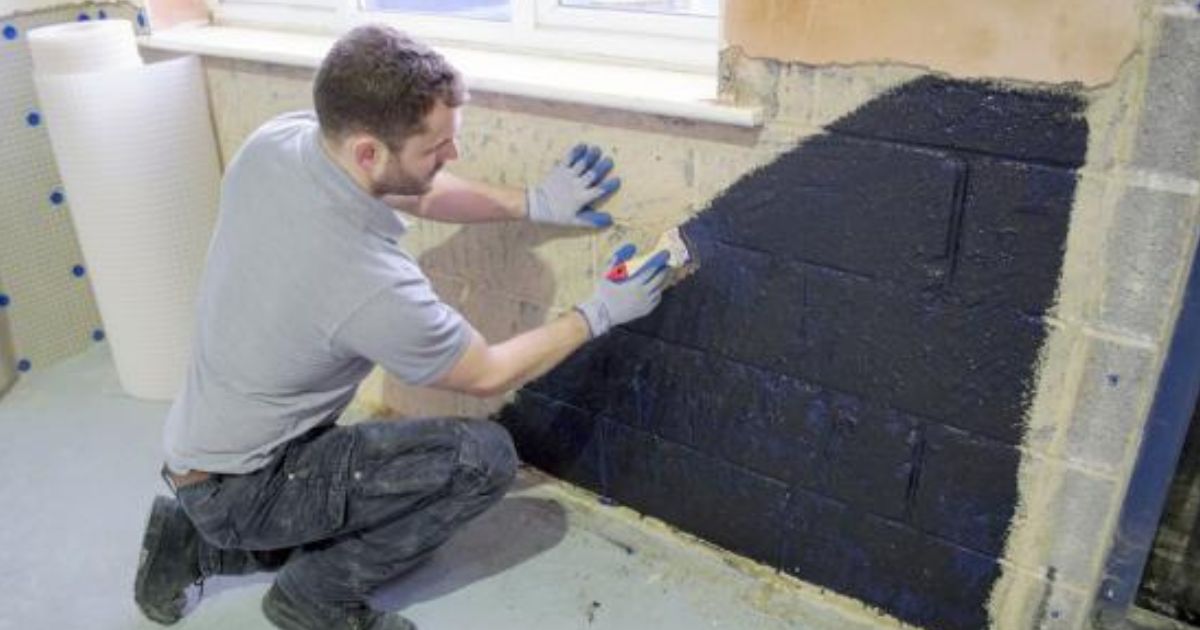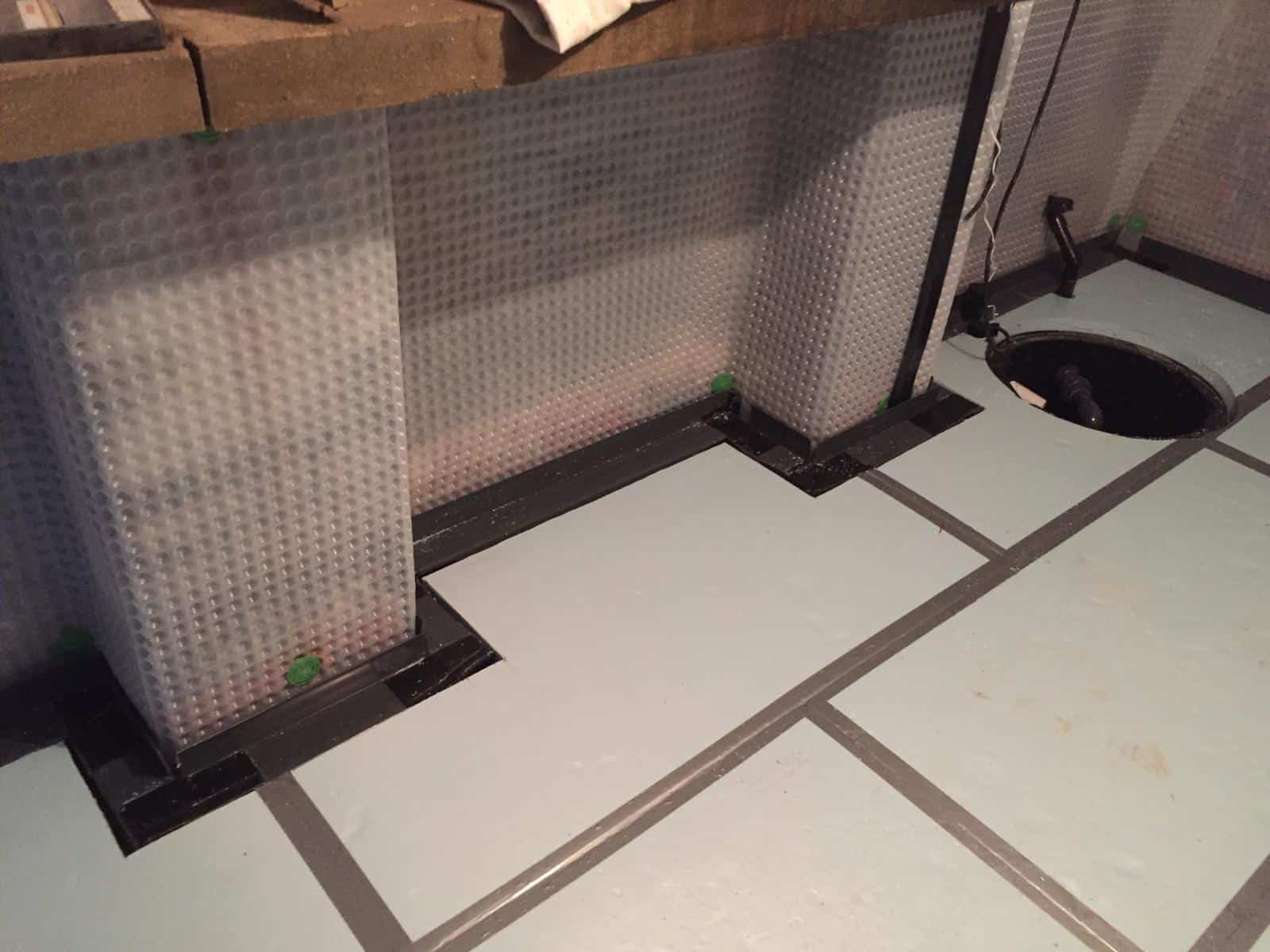Do you need a professional moisture assessment? Find out with damp proofing newcastle
Do you need a professional moisture assessment? Find out with damp proofing newcastle
Blog Article
Exploring the Different Strategies and Solutions for Effective Damp Proofing
Wetness in buildings positions substantial obstacles to both structural integrity and interior air high quality. Different methods and options have actually arised to fight this prevalent problem. From standard damp-proof membranes to ingenious chemical therapies, each approach offers special benefits. Recognizing these choices is important for reliable moisture control. Picking the right solution depends on specific building conditions and demands, motivating more expedition right into the most efficient moist proofing techniques readily available.
Comprehending the Sources Of Dampness
Although moisture can emerge from different sources, understanding these reasons is crucial for effective remediation. Frequently, wetness originates from three key resources: rising wet, passing through damp, and condensation. Increasing wet happens when groundwater takes a trip upwards via permeable materials, such as block or rock, typically due to an absence of a reliable obstacle (damp proofing newcastle). Penetrating damp is generally triggered by exterior elements, including roof leakages, damaged rain gutters, or damaged walls, permitting water to infiltrate a property. Condensation, on the various other hand, results from excess wetness in the air, frequently intensified by inadequate air flow and temperature level differences, bring about water beads basing on surfaces. Recognizing these underlying issues is important, as each type of wetness requires a customized method for removal. Appropriate analysis assists in identifying the most reliable solutions, inevitably securing the structural integrity of a building and enhancing interior air top quality
Conventional Damp-Proof Membrane Layers

Chemical Damp-Proofing Solutions
Chemical damp-proofing remedies offer an ingenious technique to stop dampness invasion in structures. These methods generally include the application of fluid chemicals that pass through stonework and form an obstacle against rising damp. Commonly used chemicals consist of silanes, siloxanes, and other water-repellent agents that respond with surface materials to develop a hydrophobic layer.The application process normally requires boring holes right into the walls, infusing the chemical remedy, and enabling it to treat. This approach is particularly useful for older structures where standard damp-proof membrane layers might be unwise. Chemical damp-proofing can be much less disruptive and extra economical than considerable renovation projects.While efficient, these remedies depend on correct application and environmental conditions for peak efficiency. mould treatment newcastle. Regular upkeep and tracking are vital to guarantee the longevity of the damp-proofing therapy. In general, chemical damp-proofing represents a functional option for guarding structures against moisture-related damages
Tooth Cavity Wall Building Methods
Dental caries wall surface construction methods provide numerous benefits, especially in wetness control and power efficiency. By including an air space between two layers of masonry, these wall surfaces properly minimize water access while boosting insulation. This mix not only secures structures from moisture however likewise adds to reduced energy intake.
Benefits of Cavity Wall Surfaces
When considering effective moist proofing approaches, the advantages of cavity walls stand apart prominently. Dental caries walls are composed of two different layers, creating an air gap that effectively reduces moisture penetration. This layout reduces the risk of wetness, as the external wall surface serves as an obstacle versus rain and water access. Additionally, tooth cavity wall surfaces boost thermal insulation, which adds to energy effectiveness by reducing heat loss. They likewise give audio insulation, aiding to develop a quieter indoor environment. Moreover, the air gap enables ventilation, which helps in wetness control and lowers the probability of mold and mildew growth. These benefits not just enhance the overall convenience of a structure however also add to its long life and architectural stability.
Moisture Control Approaches
Efficient dampness control methods are essential in dental caries wall building and construction to guarantee long-lasting protection versus moisture. One key method involves the consolidation of weep openings, which assist in water drainage from the dental caries, protecting against buildup. Furthermore, using breathable membrane layers can aid manage wetness levels while allowing caught vapor to get away. Appropriate positioning of insulation is also crucial, as it ought to not obstruct water drainage courses. Making certain that the external leaves of the tooth cavity wall surface are created with waterproof products boosts total durability. Regular maintenance checks are vital to determine any kind of clogs or damages early, safeguarding the structure's stability. Eventually, a combination of these methods develops a durable protection against dampness breach in tooth cavity walls.
Insulation and Energy Effectiveness
Insulation plays a crucial duty in boosting power performance within tooth cavity wall building and construction. By incorporating protecting materials, these walls create a thermal barrier that lessens heat loss and minimizes power usage. Efficient insulation not just helps keep a secure interior temperature but additionally reduces the risk of moisture, as it avoids condensation within the wall surface cavity. Different methods, such as the use of inflexible foam boards or mineral woollen, can be used to accomplish excellent insulation efficiency. Furthermore, appropriate setup is important to assure that voids and spaces are reduced, which can or else jeopardize power performance. Eventually, a well-insulated cavity wall surface contributes considerably to overall sustainability and decreases cooling and heating costs for homeowners.
Exterior Damp Proofing Techniques
External moist proofing methods are necessary for securing frameworks from moisture seepage. 2 effective strategies consist of the application of water resistant membranes and the installation of French drains. These remedies assist minimize water accumulation and maintain the honesty of buildings.
Waterproof Membrane Application
While numerous methods exist for protecting against moisture ingress, the application of water-proof membranes stays an extremely reliable external wet proofing strategy. These membrane layers are typically made from products such as polyethylene, rubber, or modified bitumen, supplying a durable obstacle against water penetration. The installment procedure involves applying the membrane to the external surface areas of walls or structures, ensuring total insurance coverage to stop leakages. Proper bond and sealing at joints are crucial to making the most of effectiveness. Water resistant membrane layers can be used in numerous forms, including liquid finishings and sheet membrane layers, enabling for versatility based on the specific requirements of the structure. This method not just shields structures from wetness yet additionally boosts their long life and structural honesty.
French Drain Installment
One reliable approach for managing groundwater and preventing wetness build-up around a structure's structure is the setup of a French drainpipe. This water drainage system includes a trench full of crushed rock and a perforated pipe that redirects surface water away from the structure. Proper setup requires mindful preparation, guaranteeing that the drain inclines away from the structure to facilitate ideal water circulation. In addition, the location of the drainpipe is crucial; it ought to be placed in locations prone to merging or excess wetness. Regular upkeep, including clearing up debris from the crushed rock and making sure the pipe continues to be unblocked, is necessary for long-lasting effectiveness. Inevitably, a well-installed French drainpipe can considerably minimize the danger of water-related issues in structures and basements.
Inside Waterproofing Techniques
Interior waterproofing methods are important for protecting a structure's interior from moisture seepage and potential water damages. These strategies commonly include the application of specialized products and strategies developed to develop a moisture barrier within the framework. One usual method is making use of waterproof finishings or sealers on walls and floorings, which prevent wetness from passing through surfaces.Additionally, installing interior water drainage systems, such as sump pumps, can efficiently take care of water build-up in cellars and crawl areas. An additional method entails the use of vapor barriers, which are mounted to hinder wetness movement from the ground right into living spaces.Moreover, attending to any type of fractures or spaces in walls or foundations with ideal sealers guarantees a complete protection against water invasion. By applying these indoor waterproofing techniques, homeowner can considerably lower the risk of mold and mildew development, architectural damages, and other moisture-related problems. Appropriate execution of these techniques is important for long-lasting protection and building integrity.
Normal Upkeep and Assessment Practices
Routine maintenance and inspection practices are essential for assuring the long-lasting performance of moist proofing services in any type of structure. Regular checks make it possible for homeowner to recognize early indicators of wetness breach, such as peeling off paint, mold and mildew growth, and musty odors. These signs can indicate underlying issues that call for immediate attention.Inspections must be performed at the very least yearly, concentrating on prone areas like cellars, creep spaces, and outside walls. During these evaluations, residential property proprietors should check out sealers, water drainage systems, and air flow to confirm they function correctly.Additionally, keeping downspouts and rain gutters is essential, as stopped up systems can cause water buildup near the structure. Implementing a regular upkeep timetable, along with timely repair services, can substantially extend the lifespan of moist proofing actions and secure the architectural integrity of the building. Aggressive steps eventually add to the overall health and wellness of the living environment.
Often Asked Concerns
How Long Does Damp Proofing Generally Last?
The period of wet proofing effectiveness varies, commonly lasting between 20 to half a century. Factors such as application high quality, environmental problems, and upkeep techniques substantially influence the durability of the wet proofing therapy.

Can I Damp Proof My Home Myself?
The specific considered the usefulness of DIY damp proofing. With proper research study and the best products, it is possible. Nonetheless, they likewise recognized the value of professional support to assure long-lasting performance and stop future problems.
What Are the Indications of Inefficient Damp Proofing?
Indicators of ineffective wet proofing include relentless moldy smells, noticeable mold development, peeling paint, moist patches on wall surfaces, and timber decay - mould treatment newcastle. Home owners should deal with these problems promptly to stop more damages and health issues
Does Damp Proofing Affect Indoor Air Top Quality?

Just How Much Does Specialist Damp Proofing Cost?
Professional damp proofing prices differ significantly, usually varying from $1,000 to $5,000 relying on the residential or commercial property's size, the extent of the moist problem, and chosen approaches. Each scenario calls for a customized evaluation for accurate prices. Generally, dampness stems from 3 main resources: rising wet, penetrating wet, and condensation. When taking into consideration reliable moist proofing techniques, the advantages of cavity walls stand out prominently. External damp proofing methods are important for securing frameworks from wetness infiltration. While various approaches exist for protecting against moisture ingress, the application website of water resistant membrane layers remains a very effective exterior moist proofing technique. Indicators of inefficient moist proofing consist of relentless mildewy odors, visible mold and mildew growth, peeling paint, damp spots on walls, and wood decay.
Report this page